Trinity Episcopal Church
Trinity Episcopal began as a mission of Trinity Church in Manhattan in 1850. Organized by Simon Cobb, it was incorporated as a parish in 1854, with the Rev. Dexter Potter leading the congregation. |
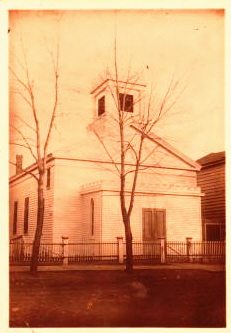
|
The first church
This building served the East New York Reformed Church on New Jersey Avenue, and when that congregation chose to build a larger replacement, the building was sold off for a "non-secular" purpose. At this time Horace Miller had donated a plot on Wyona Street to
the Trinity congregation on the grounds that an Episcopal church was to be constructed. He also donated $500 to purchase the old ENY Reformed Church building, and
it was moved to Wyona Street. The Rev. J.F. Cornell had taken over over for Rev. Potter, but in 1858 he was relieved for "mental prostration" and sent to the Flatbush Insane Asylum! |
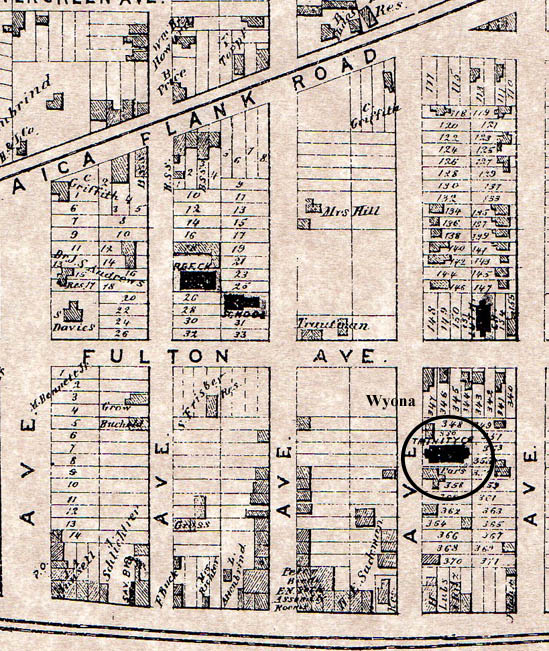
|
Trinity Episcopal location, 1873
This 1873 details the location of the church, on the east side of Wyona Street south of Fulton. After Cornell the church pastors were Charles Cleveland (1859-1866 died) Rev T. McKee Brown (1866-1868) resigned, John Morgan (1869-) John I. Elsegood (1869-1884 died) The Rev. Nelson R. Boss takes over in 1884, and by then the church has plans for a substantial building on the corner of Schenck and Arlington Avenue. The old building is sold to the Temple Sinai congregation. |
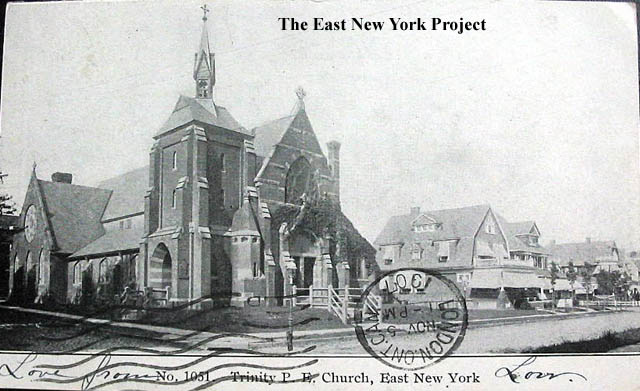
|
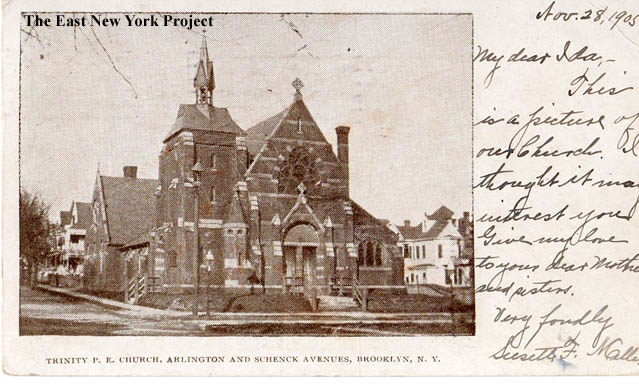
| Trinity Episcopal Church
Maker: Lowe and Thompson Dated: unk Status: Own (BG)
Maker: Unk Dated: 1905 Status: Own (RG)
Two early postcard views of the new church, dedicated in 1886, on the northeast corner of Arlington and Schenck. The architect was Richard M Upjohn, the son of Richard Upjohn, who had designed Manhattan's Trinity Church. the ornate bell tower visible in these early photos is gone in later years, we don't know when or why it was altered. The Rev. Nelson Boss continues to serve the congregation until 1913. |

|
|
Trinity Episcopal Church
Maker: Wm. Fick Dated: 1910 Status: Own(RG)
This house on the left in the background served as the rectory. See below. |

|
|
Rectory, 29 Schenck
This house with a second-story porch was built around 1893, and served as the rectory until 1921. Around 1930 the church would construct the rectory next door at 131 Arlington. |

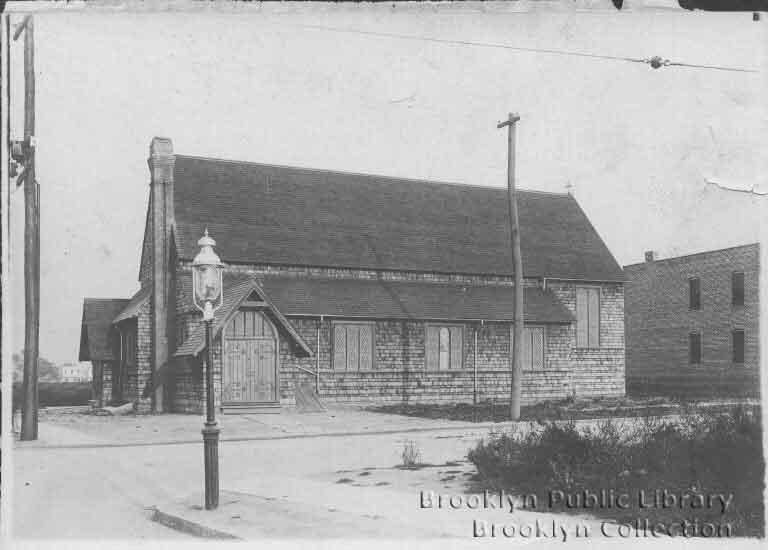 |
Turf Wars
Trinity found itself in several turf wars after the new church was completed. Under Joseph Elsegood, an organization was formed called the Ours Association. It was limited to members of the church and the sunday school, and organized social events as well as raised money for fixing up and decorating the original church building. The group was led by the lawyer Frank C. Lang, who lived across from the church on the northwest corner
of Schenck and Arlington. After Elsegood passed, the group had a falling out with the new pastor, Nelson Boss. Things escalated to the point where in 1888 Lang led a
splinter group to form a new church. With the permission of the bishop, they bought land on the northeast corner of Pennsylvania and Liberty Avenues from the Pitkin family.
Trinity had originally been granted exclusivity within the Township of New Lots, but Lang argued successfully that their exclusivity was appropriate in 1854 but not by 1888.
St. Clements was allowed to construct its building in 1890, but the congregation only remained there into the 1920s .
Trinity's next battle was with the Church of the Transfiguration. This Episcopalean church was formed to serve the Cypress Hills community in the late 1890s, and in 1901 they wanted to build a permanent home on Ridgewood and Euclid Avenues. Again Trinity argued this would encroach on their territory - this time they were successful, and the location was moved to Autumn and Ridgewood Avenues. |

|
Cub Scout Pack 311, Trinity Church
We move ahead to the postwar era, and Rick Constant sent this great image of his Cub Scout Pack 311 around 1953.
Wes Kent, who was a scout there in the 1940s, adds this recollection; "I remember also our cub scout meeting in the church basement. We frequently had to move around a lot of donated heavy furniture for those meetings, and choir practice. If a family was in a bad situation they stayed in the basement, using the furniture, beds and the kitchen until they found a place to live. Don't see that much any more." |
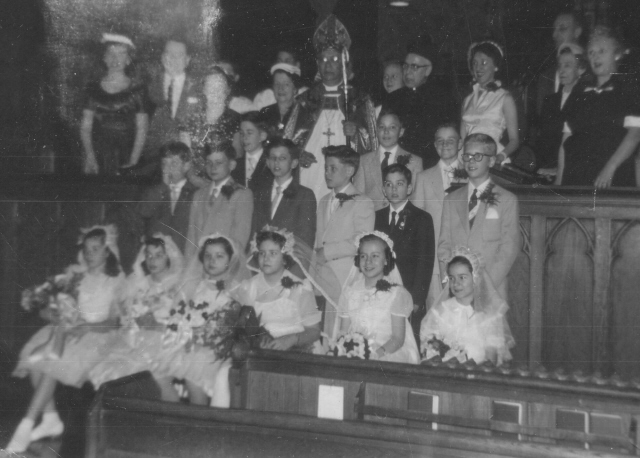
|
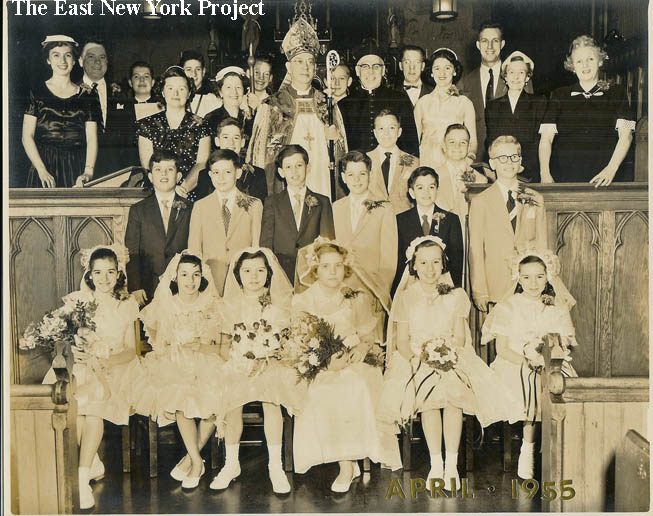
| Trinity Episcopal Church, Confirmation 1955
Robert Jefferson comes through big with some confirmation class photos of the interior of Trinity Episcopal in the 1950's. Les Livingston
identifies himself in the second row of boys, far right and "confirms" the date was April 3, 1955. The picture was taken near the choir stalls and Dr. Gruman is the Rector and the Bishop is De Wolfe . Donald Hulslander was also in this group, and he supplies the official photo! |
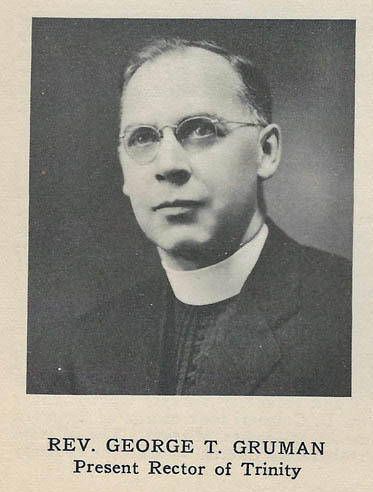
|
Rev. George T. Gruman (1893-1978)
Rev. George T. Gruman took over in 1929 after the passing of Rev. Jacob Probst. I haven't identified officially his final year of service, but he last appears in the Brooklyn phone directories at the parsonage in 1960. Wes Kent adds these recollections; "I remember so vividly the Reverend George T. Gruman, pastor of Trinity Episcopal Church. And especially his wonderful smiling face at the front door of the church at the end of each service, dressed in a black robe and a round black cap with a brilliant red ball on top, with the sun shining on him and into the church. He was an extraordinary personality and I often though as a young boy that he was the expression of God's love and good will.
He had a black 1950's four door Pontiac sedan and on occasion some of us would ride with him to some church function. I was a real thrill as he was a very fast driver. He put new meaning in the term LeMans." |
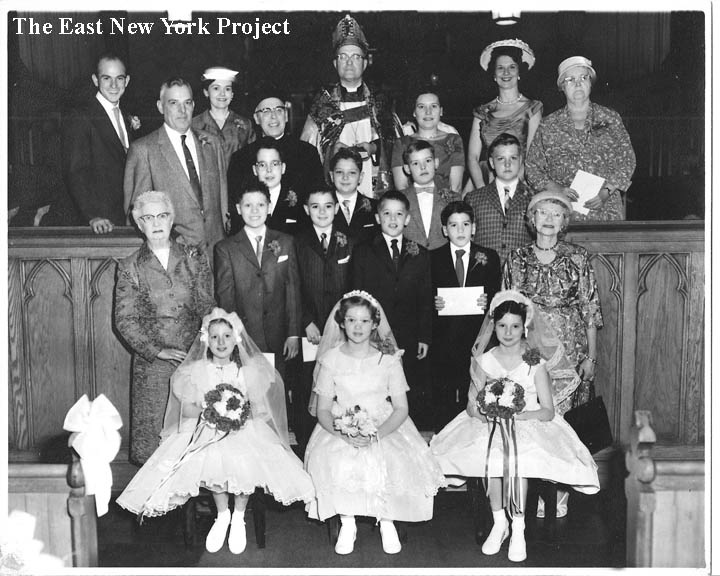
|
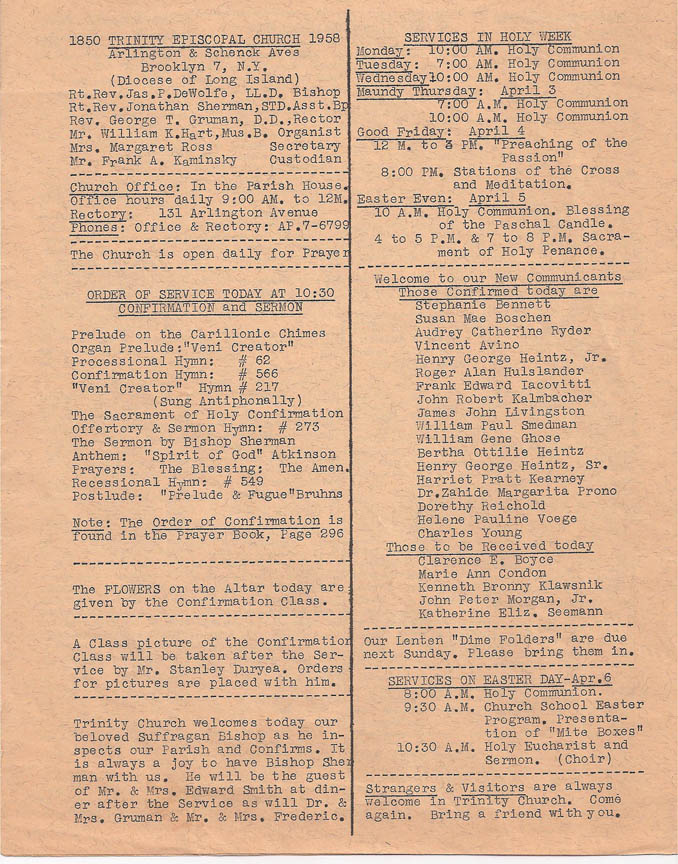
| Trinity Episcopal Church, Confirmation 1958
Donald's brother Roger follows up by sending in the 1958 confirmation class picture and program- and it turns out Les' brother James is in this group! |
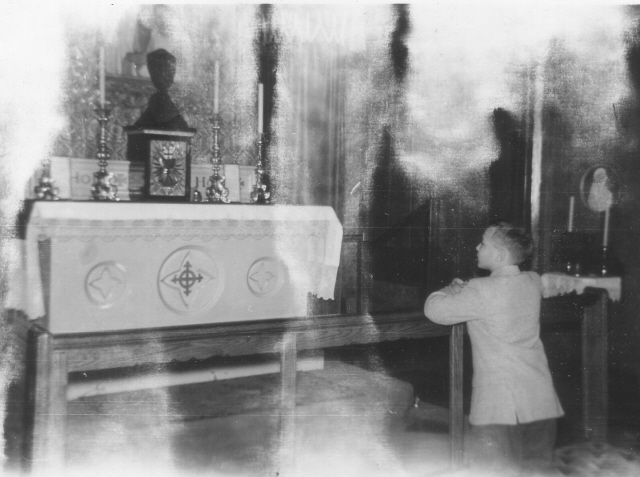
|
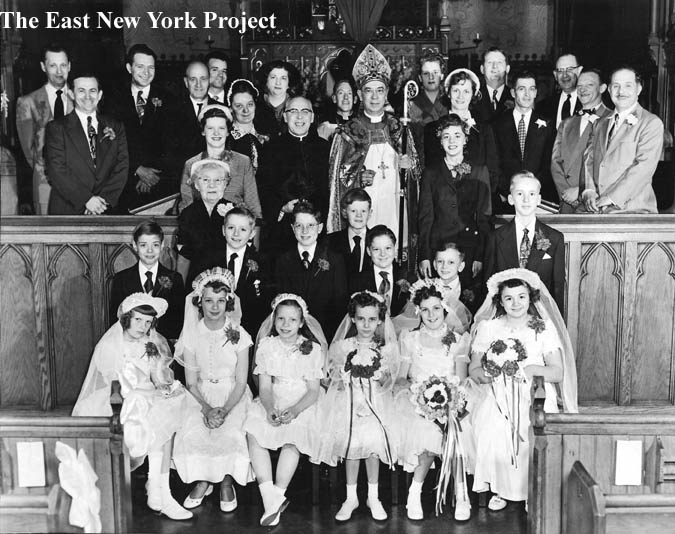
|
Also from Rob Jefferson, a shot by the altar in the 1950s. On the right, Rick Constant supplies another confirmation class picture from the early 1950s. Rick notes; "besides Father Gruman and Bishop DeWolf I can point out that I'm in the second row standing, 3rd from right. As far as the others, Wayne Duryea is second from left, I believe the boy on the far right was a Wesley ?. The two girls in the middle would be Caroline Offt sitting in front of me and to the left in the photo is Valerie Whidden. The photo is stamped on the back, Stanley H. Duryea, 126 Grant Ave, etc."
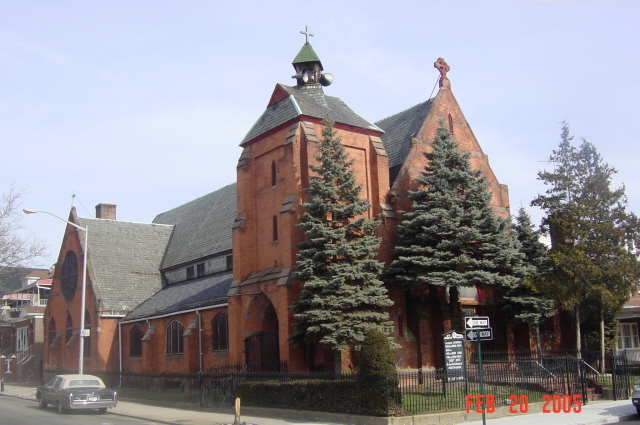
|
|
Trinity Episcopal Church
A more recent image shows the truncated bell tower. In 1980, the congregation, in reaction to what was perceived as liberal leanings of the Episcopal Church Association, joined with other churches to form the American Episcopal
Church. As a result, the name was changed to St. Joseph's. |
|







